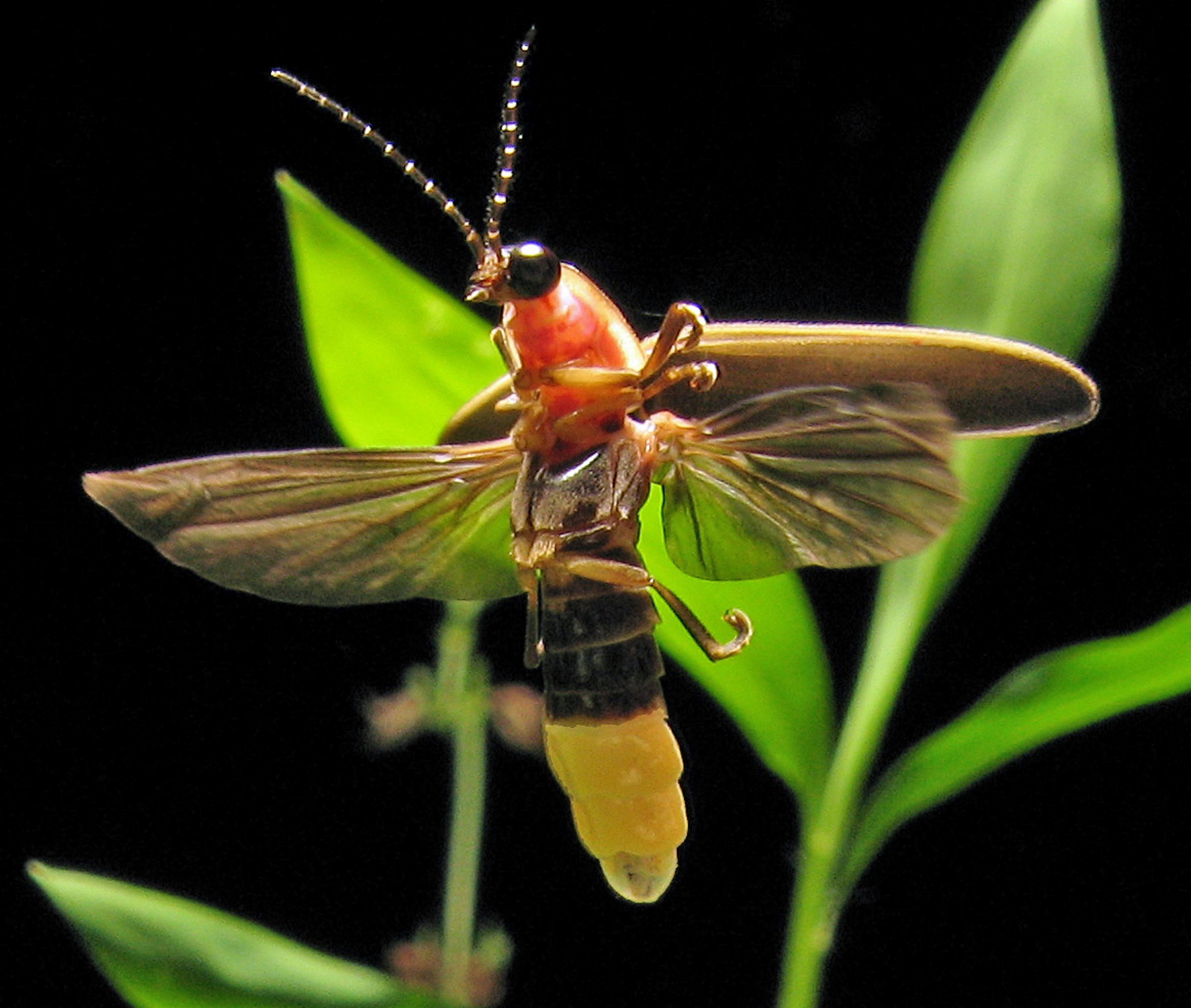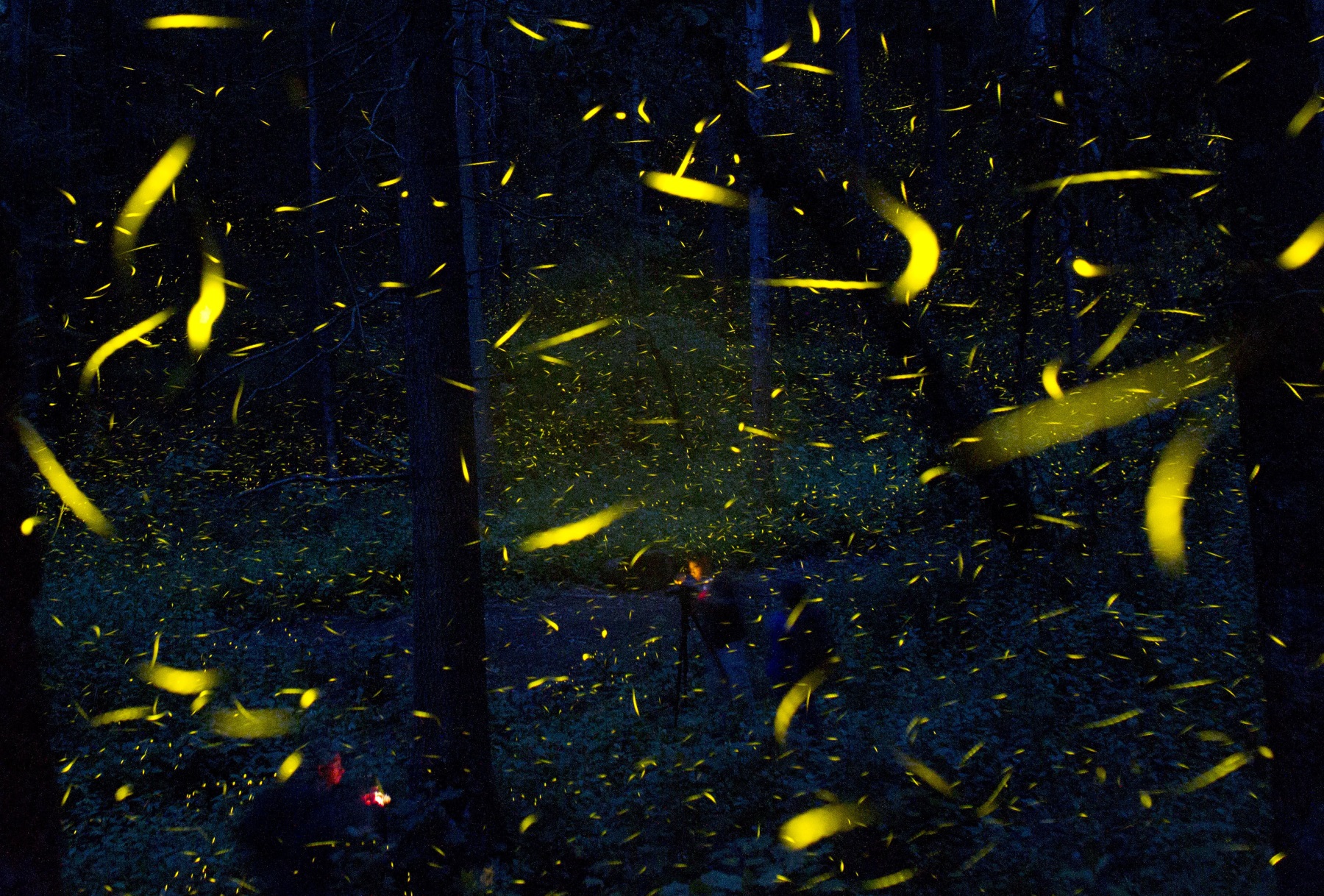In Georgia And Around The World, Fireflies Face Threats

Pesticides, loss of habitat and too much artificial light at night were the main problems identified for the 2,000 or so species of fireflies around the world. Those first two threats are problems for all kinds of insects. Light pollution is a special kind of challenge for fireflies, since their blinking is linked to finding a mate.
art farmer / wikimedia commons
Are summer evenings not quite what they used to be, with a cicada soundtrack and a view full of lightning bugs?
It’s a question Tufts University biologist Sara Lewis said she gets a lot.
“It’s really, really one of the things that, as firefly biologists, we hear most often, from people we’re sitting next to in airplanes, or whatever,” she said, “There’s a lot of rumors flying around; a lot of people are noticing fireflies are disappearing. They’re not seeing fireflies where they used to see them.”
So Lewis is working with other researchers to figure out to what extent fireflies really are fading from view.
The first step, she said, was to take stock of the major threats to fireflies. Those results, from a survey of firefly experts, were published recently in the journal BioScience.
Pesticides, loss of habitat and too much artificial light at night were the main problems they identified for the 2,000 or so species of fireflies around the world.
Those first two threats are problems for all kinds of insects. Light pollution is a special kind of challenge for fireflies, since their blinking is linked to finding a mate.
“We have evidence from scientific studies that have been done in the past 10 years or so that too much artificial light can interfere with these courtship signals that fireflies use,” Lewis said.
Lightning Bugs In Georgia
The study is a great start to get a handle on what’s going on with fireflies around the world, according to Kathrin Stanger-Hall, who studies fireflies at the University of Georgia.
Because sometimes, even the researchers just have stories to go on
“Usually when firefly people come together, you get anecdotes like, ‘Yeah, I went back to my field site and it was destroyed by a road-widening project,’” she said. “Or, ‘There’s a suburb now where this unique population was.’”
Stanger-Hall, who wasn’t involved in the study, said firefly populations can fluctuate from year to year, depending on the weather, but long-term, they do seem to be in decline.
“You can impact firefly populations without even noticing,” she said.
Take blue ghost fireflies, limited in their distribution, but “magical” to see, she said. The males hover low over the ground, glowing instead of flashing on and off. They’re looking for grain-of-rice-sized females, which don’t fly at all.

Those flightless females and patchy groups leave the fireflies, which live around Athens and in North Georgia, susceptible to disturbances. A new development could inadvertently wipe out an entire population.
The most common lightning bugs, the big dipper fireflies that float around yards in the summer, flashing their mating displays at dusk, are less at risk from something like that.
Pesticides, especially in suburban lawns, are a problem for them. But they can live pretty much anywhere, and since they blink when it’s still light out, they’re less affected by artificial light, Lewis said.
“We’ll always be able to go outside and see fireflies because of those guys, the big dippers,” she said. “But there are probably other species that are not doing fine.”
Future For Fireflies
The next step, she said, is to figure out which species do need help, and work to collect more information about them. Lewis said that’s something people can help with, through a citizen science project called Firefly Watch.
And, Lewis said, she’s still hopeful about the future for fireflies.
“Even though we have identified that there are these threats to fireflies, that’s the first step that that we need to take in order to protect fireflies,” she said.








